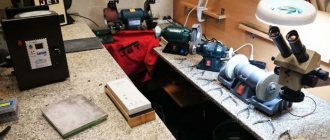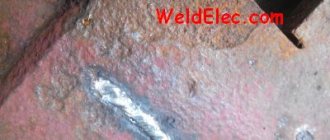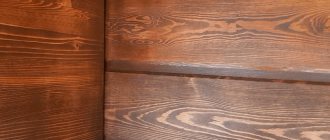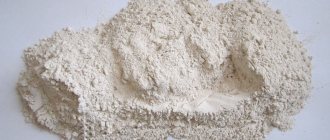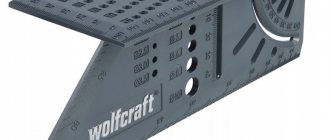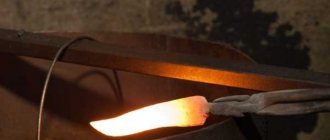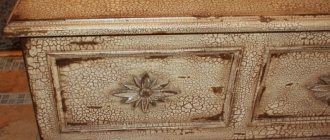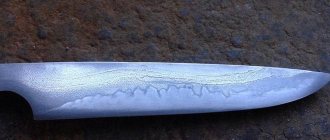European-quality repairs from A to Z If you know how to hold a hammer, spatula, screwdriver in your hands, then you have every chance to earn from 80,000 rubles per month in the conditions of the global crisis! More details>>
Handmade soap Technology for making decorative soap and cosmetics. Income 80,000 rubles/month. not the limit! More details>>
Cast iron at home
I read the forum - I still can’t figure out whether anyone has managed to cast cast iron with satisfactory quality, or at least make a part out of it, and not just melt it.
As I understand it, a jew's harp cannot be small (in sizes no more than 50 liters of a propane cylinder), and it does not produce an acceptable quality of metal (suitable for the manufacture of machine tool parts). (I know about further aging). To improve it, an accumulation furnace is used, where liquid metal accumulates, disassembled, and alloys are introduced. Cutting it down doesn't really work. With this type, the option with a harp is no longer necessary? Is it possible to melt cast iron (up to 5 - 10 kg) in a steel crucible from a scrap cylinder, for example on gas burners or coal? If high-quality cast iron scrap is used (for example, pieces of a broken frame from a Soviet machine tool) and melting takes place in a crucible, does this ensure the quality of the extracted product at the output (the mode of heat treatment, casting, cooling and aging is special), at least in a chemical sense - does it burn out? and carbon and alloys? It’s absolutely possible to melt cast iron at home, it’s just that no one needs it separately yet. A cupola furnace cannot be small, it’s true, the network will not support an electric furnace; all that remains is a fiery furnace and melting either in a crucible or on a hearth. In a crucible, the change in cast iron composition will be smaller. You can sculpt crucibles yourself from graphite and fireclay chips, although they are short-lived but cheaper. Read ancient books on smelting, then everything is clearly described, including images of furnaces and smelting modes. Now I’m also curious about this process, I’m starting to gradually go through it.
The correct coating has the appearance of varnish, is hard and does not get wet in water. My experimental frying pan has been in use for six months now, but I deliberately wash it with weak soap and do not lubricate it with oil. I just wipe it and heat it on the burner (the last procedure also allows you to get rid of the smells of the last dish). During this time, the coating on the bottom has been scratched, so in the very near future I will fly it from below, and for now I will use the top as before.
And also, before welding the part, you need to determine the grade of cast iron, at least approximately, in order to more accurately determine the welding method. There are varieties. Cast iron is marked as L1 L2 and so on up to L6, but there are other markings. Here are all the markings I'm familiar with. L1 L2 L3 L4 L5 L6 LR1 LR2 LR3 LR4 LR5 LR6 LR7. LR means cast iron refined with magnesium.
Have a nice day, forum members. I read here about melting cast iron and casting it into blanks or ingots. What about the real details? Please do not send to YouTube. I then noticed a video about “lost wax casting”, but then the factory. , but I’m interested in it being free and angry. I pour colored metal into plaster with sand. But I think at such a high temperature the plaster seems to be destroyed. what to replace it with?
Cast iron is made from an alloy of iron, carbon, silicon and phosphorus. At a temperature of 1400 degrees, the cast iron product is cast using seamless technology in a whole earthen figure, which splits after casting the product. At the end of production, the product is cleaned, minor imperfections that occur during the casting of a cast iron figure are removed to obtain a perfectly clean, rough surface. Several layers of enamel are applied to the outer and inner side of the product, after which the cast iron product is fired at a temperature of 800 degrees for half an hour. Sharp porous enamel allows drops of fat to easily penetrate the small pores of cast iron and create a non-stick coating. This enamel provides the most global heat distribution and uniform cooking of food. The last stage of the industrial cycle is the installation of accessories.
Unambiguously! For multi-storey buildings with central heating, it is recommended to install cast iron radiators. They are not subject to corrosion and retain heat well. Their primary advantage over other radiators is that they do not react to the quality of the coolant. Heating water undergoes water treatment and various reagents are added significantly. Starting from salt and soda, and various additives to soften water. All current radiators react strongly to the lack of water in the system. According to the instructions, it is not recommended to drain water from the system for more than 15 days. And here we drain it for the whole summer season. So there you go! In aluminum, bimetallic and metal radiators, the process of decomposition of the remaining water occurs. This causes wear and tear on the radiators. Cast iron radiators solve all this. They don't react with anything. Therefore, their durability is 50 years or more. Cast iron radiators are immediately available in the current design. Radiators are supplied coated with baked epoxy polyester enamel. They don't feel the need to paint. For example, radiators from KONNER: MODERN, HIT, Retro, etc. The photo shows a MODERN radiator.
Before the main use of cast iron cookware, it is recommended to wash it with hot water and soap, then wipe it dry, and then lubricate the entire surface of the cookware with fat or vegetable oil. After this, bake in the oven for one hour. Current professional cast iron cookware does not require old-fashioned processing; it is already completely ready for use, since it has an internal enamel coating.
Iron casting technology
The technology of cast iron casting was first mastered in China around the 10th century AD; in Europe it was first mentioned in the 14th century as a material for the production of cannons. In Russia, the first “iron casting suitable for making cannons” dates back to the era of Ivan IV Rurikovich. The heyday of the cast iron era came in the 19th and 20th centuries. At this time, bridges and pipelines, lanterns and fences, elements of architectural decor and load-bearing structures of buildings were made from it. In addition, rails, parts of machine tools, and engines were cast from the same material. Separately, it is worth mentioning cast iron cookware, irons and heating appliances.
Cast iron was also the starting component for the production of steel using the open-hearth method. The volume of its production was the most important indicator of the country's economic power and its military potential. With the invention of inexpensive technologies for the production and processing of aluminum and steel alloys, the importance of cast iron as a structural material has noticeably decreased. The widespread development of the production of high-strength plastics and composite materials has finally pushed cast iron from the forefront.
Iron casting process
Cast iron is produced in blast furnaces - huge structures as high as a ten-story building. After the ore is melted and impurities are removed, the cast iron is cast into steel molds - molds. The resulting ingots (pigs) contain cast iron of a certain grade and are ready for further processing. At foundries, various finished products are cast from them.
Iron casting process
The main stages of the iron casting process:
- Preparing a finished product model
- Making a mold for casting
- Melting cast iron pigs
- Melt casting into molds
- Removing castings and finishing them
There are several methods for making models and preparing molds
Basic methods of iron casting
Modern industry uses many different methods to produce iron castings. They come down to several basic casting methods:
- into molds made from a clay-sand mixture (the so-called “in-ground” casting)
A model of the finished product is placed inside the mold, completely repeating its shape, but exceeding it in size by the amount of casting shrinkage. The clay-sand mixture is compacted and compacted, ensuring complete adherence to the model. Casting of cast iron into a mold is carried out through specially provided holes - sprues.
- into plaster molds (and from other hardening solutions);
- into shell forms;
- in chill molds (metal protected forms);
- by lost wax models;
- under pressure.
- In a gasified model
1.Sand casting
The accuracy of geometric dimensions and surface roughness of castings obtained in sand molds in many cases do not meet the requirements of modern technology.
Sand casting provides low surface quality (below Rz = 320 microns), low accuracy (below 16th grade), is difficult to automate and does not provide satisfactory working conditions. Therefore, special casting methods are developing at a rapid pace: in shell molds, investment casting, chill molding, under pressure, centrifugal and others, which make it possible to obtain castings of increased accuracy, with low surface roughness, minimal allowances for machining, and sometimes completely eliminating it, ensuring high labor productivity, etc.
Iron production
From a number of the main indicators of the country's economic power, the production of cast iron was relegated to a number of secondary ones, but did not lose its importance for the economy.
The leader in pig iron production with an almost tenfold lead is China - 543.748 million tons per year, followed by Japan - 66.943 million tons, Russia - 43.945 million tons and India - 29.646 million tons. China produces more than 50% of the world's pig iron.
Cast iron is produced in blast furnaces, the prepared iron ore is smelted along with additives, and coking coal or natural gas is used as fuel.
The main consumption of pig iron today is as a component for steel smelting. The development of cast iron production is mainly in the direction of increasing its energy efficiency, environmental friendliness and cost reduction.
The unique properties of cast iron - low cost, strength and corrosion resistance - allow the ferrous metal to look confidently into the future.
Slag formation
Thus, we have found out how cast iron is produced. However, when this material is smelted, another product is obtained that is widely used in the national economy. When melting 1 ton of cast iron, 0.6 tons of slag comes out. The fact is that even refined iron ore contains a fairly large amount of clay. Coke also contains ash. To remove these unnecessary elements, among other things, fluxes (calcium and magnesium carbonates) are added to the charge. During the smelting process, they enter into a chemical reaction with various types of impurities, resulting in the formation of slag. It is an aluminosilicate or silicate melt.
The density of slag is less than that of liquid cast iron. Therefore, during the melting process it is located underneath. It is removed periodically through a separate taphole, called a slag taphole. This by-product of iron foundries is used mainly for the production of cement and building blocks as a filler.
Cast iron castings
Cast iron castings come in different sizes - from small parts to multi-meter beds of large machine tools. Their configuration can also be very diverse - from simple bushings to sophisticated cast grilles and gates.
Iron castings are also divided into:
- by purpose - general and special, such as anti-friction, heat-resistant, etc.
- according to the structure of the material - ferritic, perritic and mixed
- According to the type of graphite contained - into spherical, lamellar, flake and vermicular
- According to carbon content - white, gray and bleached
In metallurgical science, there are other classifications of cast iron castings.
Casting methods
The most modern method is casting using gasified models. This method allows not only casting iron, but also producing steel castings. The method is economical, environmentally friendly and allows for the reuse of mold material.
The method consists of the following steps.
Model preparation
The models are made from pre-foamed and dried polystyrene with a grain size of 0.3-0.9 mm. (depending on the dimensions of the part). The material is blown into molds, baked and cooled.
Casting using gasified models
Models are glued or soldered into blocks. Next, the blocks are lowered into the bath to apply a non-stick coating and dried. If the product configuration is complex, then the coating is applied from a nozzle.
Molding
Model blocks are placed in a flask placed on a vibrating base, gradually filling them with a sand-clay mixture, their “earth”. Sometimes backfilling is done layer by layer, compacting each separately.
The filled and compacted molds are transported to the pouring shop. The vacuum pump completes the compaction of the sand and gives it sufficient strength.
Pouring metal
The metal is poured directly into the model material. The liquid melt evaporates the polystyrene models and fills all the relief details.
Polystyrene combustion products are removed by a vacuum pump directly through the walls of the mold.
Final operations
Iron castings cool in the mold. The rate of temperature decrease and its overall duration are determined by the weight of the part, the thickness of its walls and the requirements of the production process. Next, the molds are broken, the castings are cleaned of remnants of non-stick paint, and the sprues are removed.
Advantages of cast iron
Iron casting differs from castings from other materials in a number of advantages, such as:
- cheapness
- high strength and wear resistance
- high surface quality, minimizing subsequent machining
Characteristics and application of cast iron
It is important to note that when using modern casting methods, not only the casting itself is cheaper, but also the final product. Many industries, which at the end of the 20th century replaced the cast iron parts of their products with steel ones, have returned or are planning to return to the time-tested material at a new stage of its development.
Melting metal at home: equipment, instructions
For a long time, men began to think about how to create their own furnace for melting metal at home. It must be portable and meet all conditions. The production facility has furnaces for melting large quantities of metal. At home, you can assemble a furnace for melting up to five kilograms of aluminum. Let's look at how to make a smelter at home.
Melting metal at home
Equipment and materials you will need
In order to melt metal, you need to buy the following components for manufacturing:
- fire brick;
- nails;
- transformer;
- copper wire;
- graphite;
- mica;
- asbestos and cement tiles;
- gas-burner;
- crucible.
The dimensions will vary depending on the wishes of the person collecting it. It is better to create a small furnace for melting metals if you want to use it only for your needs. You will spend less time making it, and a small amount of kilowatts will be spent heating it. If you do it using diesel fuel or coal, then do not forget about installing thermal insulation and air supply.
Metals such as iron, nickel, tin, and copper are melted in an electric furnace. The output voltage in an electric furnace should be greater, which means the distance between the electrodes will increase. Brushes from an electric motor are suitable instead of electrodes.
Step-by-step instruction
How to make a melting furnace at home - read the following instructions:
- A high-frequency alternating current generator is installed.
- Spiral winding. Made from copper wire.
- Crucible.
All these elements are placed in one housing. The melting cup is placed in the inductor. The winding is connected to the power source. When the current is turned on, an electromagnetic field appears. The resulting eddy currents pass through the metal in the cup and heat it. Melting occurs.
Homemade muffle furnace
The positive properties of an induction furnace are that when melting metals, a homogeneous melt is obtained, alloying components do not evaporate, and melting occurs quite quickly. In addition, the installation of such a stove does not harm the ecosystem and is safe for the user.
Cooling can be done using a fan. Only the latter should be located as far as possible from the furnace, otherwise its winding will serve as an additional closure of the vortex flows. This will reduce the melting quality.
Wheel furnace
Features of melting some metals
In order to melt metal at home, this element must be placed in a small cup or crucible. The cup with the material is inserted into the oven. Then its melting begins. To melt the precious elements, they are placed in a glass ampoule. In order to make an alloy from several components, follow these instructions:
- First, a refractory element - copper or iron - is placed in the melting cup.
- Then a more fusible component is placed - tin, aluminum.
Melting aluminum in a homemade furnace
Steel is a refractory material. Its melting point is one thousand four hundred degrees Celsius. Therefore, to melt steel at home, you must follow the following instructions:
- To melt steel at home, introduce additional regenerators. If the furnace runs on electricity, then electricity is used.
- During induction heating, slags are added. They increase the speed of melting.
- Constantly monitor instrument readings. If necessary, lower the melting temperature by switching to a more moderate mode.
- It is always correct to determine whether the steel is ready for work or melting. Follow all the above steps. Only then will the resulting metal be of high quality.
Main characteristics of brass
Before deciding how to melt brass at home, you need to determine the temperature regime. Copper-based brass alloys in chemical composition are two-component with varying proportions of zinc, and multi-component, containing lead, bismuth and other metals. Knowing the alloy markings, it is easier to determine the exact melting temperature of brass. This data is available in reference tables.
Often you have to use an incomprehensible scrap, it is difficult to determine the grade of metal by color, alloys differ slightly in shades. To melt unmarked scrap, you need to focus on the temperature range of 880–950°C. The less zinc in the composition, the lower the melting point. It is advisable to protect metal, which darkens over time, from oxidation. Such scrap is cleaned to a shine before being melted. The scrap is sprinkled with coal chips. Melting of metal under such a fur coat will proceed faster. It is important to consider that not all alloys have good fluidity; it is sometimes difficult to melt them.
Melting metal and cast iron
A furnace for melting metal is a body made of fireclay bricks. The binding element is clay. The firebox is designed to burn coal. There is a hole at the bottom through which the air is blown into the inferno. At the bottom there is a cast iron grate called a grate. Coke or coal is laid out on it. It can be removed from the old stove. Sometimes refractory bricks are laid on edge when forming the body. The finished structure is fastened from the outside with a metal belt.
A furnace for melting metals must have a crucible. It can be an enameled or cast iron cauldron. The location of the crucible is next to the burning coke. To improve airflow, a fan is installed nearby. The equipment is used for steel smelting, but can be used as a furnace for cast iron smelting.
Aluminum smelting
Making a furnace for melting aluminum with your own hands is a real thing. In industrial production, units with the name - rotary-type ovens - are very expensive.
To understand how to make a furnace for melting aluminum, you need to understand their operating principle. There are several types where non-ferrous metal is melted.
Mini oven
Take a car wheel and bury it in the ground so that the top cut does not protrude outward. A hole is made in the middle for the pipe. One end is passed into the hole, and the other is brought out. A cooler is placed on it to pump air. The smelter is filled with coals and aluminum scrap. Air is supplied and the temperature rises.
Metal tank
You can make a furnace for aluminum from a metal tank. For example, the body of a top-loading washing machine. The interior of the structure is lined with refractory bricks. A pipe for air supply is mounted below. Thus, portable equipment is obtained.
From the bottle
One of the unusual ways in which aluminum is melted. Nichrome wire is wound around the bottle. The surface of the bottle is first lubricated with oil. A mixture of liquid glass and clay is applied on top. Drying is carried out for a week. Then another layer of wire is wound and clay is applied. After 7 days, the bottle is removed and only the heat-resistant shell remains. Voltage is connected to the ends of the wire to glow the nichrome, and raw materials are loaded into the hearth.
how to melt iron at home (10 grams)
we need to look at the temperature that Rothenberger’s autonomous gas burners develop, maybe they’ll give you a ride, they’re sold here in Ob. Regarding the arc - I dabbled once, although the voltage was 12V at a current of about 10A. I melted a drop of iron so that it melted into the glass, but if you didn’t heat something more massive, the temperature gradient would be too large, it would be barely red at the edges, and it would evaporate and boil near the electrodes. unless you build an electrolyzer and heat it with a hydrogen flame, you just need to clarify the temperature. Iron? Fe? Or some other metal? Lead, tin - please. Iron - no way. Other temperatures are needed.
iron melts at a temperature of 1539C, you can try to set fire to the house and throw a piece of iron into the thick of it, it might melt
Using an oxygen-acetylene torch (used in car service centers and construction sites). or build a HDTV.
Go to the housing office to see the welders.
The most interesting way to melt iron is with thermite :-)) This is done like this: Take aluminum powder (If you have silver paint, use it) and mix it with potassium permangonate (potassium permanganate, this is a good oxidizing agent) 1:1. The combustion temperature will be sufficient even to melt the frying pan. This mixture is ignited with a good charge of match powder or something better, you just can’t light it with a match. This thing burns very powerfully, so take care of safety carefully, do the experiment on the street, do not stand nearby (the column of sparks and fire will be more than a meter). In fact, when thermite is used for welding, for example, rails, it seems that iron oxide is mixed with aluminum, which, when melted, is reduced into pure iron, flows down and thus welds the rails. But as I understand it, you need to melt a certain piece of iron? Then my recipe is what you need. And the New Year is just around the corner, you can melt the metal and at the same time you can set off fireworks :-)))))))
Features of cast iron
An iron alloy containing more than 3% carbon is called cast iron. The metal has high fluidity and hardness, due to which it fills a mold with a configuration of any complexity. Cast iron can be exposed to the open air for a long time without being subject to corrosion or destruction.
The technology of cast iron production was mastered back in the 17th century. It was used to make bridge railings, sculptures, fireplace grates and stove grates. Simple forming and smelting technology allows cast iron to be cast on an industrial scale and at home.
- General properties of cast iron
- Iron production
- Advantages of cast iron
- Iron casting technology
- Iron casting process
- Model preparation
- Molding
- Pouring metal
- Final operations
- Home casting methods
Lead smelting
An electric furnace for melting lead consists of the following elements:
- A round casing made of stainless steel, inside of which there is insulation. It is attached with brackets to the wall.
- An industrial heating element is supplied from below.
- There is a rotary type valve on top.
- A sensor that is located 3 cm from the bottom.
- There is a temperature regulator on the side.
By setting the regulator to a certain temperature, we warm up the device. The lead inside melts. At the end of the melt, a mold is placed underneath and the valve opens. Molten lead fills the interior of the mold.
General properties of cast iron
Cast iron is produced in blast furnaces. The heating temperature from burning gas and coal dust increases. As a result, 2 types of high-carbon alloys are obtained:
- conversion,
- casting.
Particle alloy, mostly white, very hard. It contains carbon in a bound form; the grain is white at the fracture. Very hard, cannot be processed with cutting tools. It is used as the main raw material for the production of steels of various grades.
Other types of cast iron: gray, malleable, high-strength. They have high fluidity and are used for the manufacture of parts by casting into molds followed by cutting. The hardness is significantly higher than that of non-hardened steels. High abrasion resistance. Disadvantages include fragility, low resistance to bending and torsion.
Cast iron is called malleable for its relatively high ductility and resistance to dynamic loads. It is stronger than gray due to the compact flake-like inclusions of graphite located between the grains. In a high-strength alloy, graphite has a spherical shape. Other types of cast iron contain free carbon in the form of graphite plates along the grain boundaries and break relatively easily. In fact, no type of cast iron can be forged.
When processing cast iron by cutting at low feed and speed, a surface with high cleanliness is obtained. Dimensions accurate to 0.02 mm.
Iron production
When starting a blast furnace, coke and sinter - enriched iron ore with flux - are poured into it layer by layer. Oxygen, a heated gas, is injected from below through the nozzles. During the combustion of coal, it is chemically converted into carbon dioxide CO2, then into oxide CO, which oxidizes iron, releasing it from the ore and making it solid.
The blast furnace process is continuous. Ore and flux are added regularly. When a certain amount of cast iron has accumulated, it is released into a ladle and then poured into molds. Liquid slag prevents oxidation of the molten metal. It is drained after the cast iron through a tap hole located above and taken outside the workshop. Later they are used as a raw material for cement production and in construction.
Advantages of cast iron
Making parts from cast iron costs much less than making similar products from steel or bronze. The increased phosphorus content makes cast iron fluid. It easily fills all voids in the form, including small elements. In terms of beauty and variety, cast iron grates look better than forged ones. They are resistant to moisture and do not require regular maintenance.
Cast iron has a variety of shapes, can be in water and soil for a long time, and is resistant to low temperatures. The production of pipes and fittings, couplings, and valves has a simple technology compared to other materials.
There is virtually no shrinkage of cast iron during cooling. This allows you to make castings with minimal waste: small profits, without storage. Processing of parts is reduced to turning the seats.
Cast iron bushings are placed in plain bearings on low-speed shafts. Having high wear resistance by abrasion, they last longer than ball bearings and cost several times less.
Use of material in construction
This section will discuss the classification, marking (grades) and application of cast irons and their alloys.
Features of application
Gray cast iron is used in construction. White is too hard and brittle. It is smelted into malleable iron or steel.
Cast iron has been used in construction since ancient times. Products made from it were of excellent quality if the production technology was strictly followed. Cast iron has always been produced by casting. The manufactured material should not have air pockets, molding lines or cracks.
- In ancient times, supporting structures were made from cast iron, which were assembled piece by piece. First, the structural cast iron elements were cast, and then the bases were connected with fasteners. This method was especially often used in arched structures.
- Cast iron has always been used to make sewer pipes, racks and post bases. Various designer items were made from it for homes.
- Pipes in our houses, heating radiators, taps, water supply valves, fittings - all this is made using cast iron.
- Plumbing products can be partially or completely made from the described material.
- I would especially like to mention cast iron heating radiators. These devices are in high demand. Such heating radiators are durable, have high heat transfer and excellent heat-storing properties. They remain warm and give off heat to the room even an hour after being turned off. Compared to steel radiators, they lose heat twice as fast.
- Today and in the past, grates were made from cast iron. With this strong material it was possible to create various shapes and designs. Interesting patterns and lines made cast iron products truly skillful. Some embankment decorations and palace fences have survived to this day. These works of art were made according to the ideas of famous masters. And cast iron made it possible to bring these ideas to life and preserve them to this day.
There is one caveat. Modern building materials have replaced cast iron. In some products, cast iron has been replaced with plastic. Today, practically no water fittings, sewer pipes, or plumbing fittings are manufactured. However, lids, fences and large sewer pipes are still made from cast iron.
Cast iron fittings
Cast iron
This type of cast iron has become popular due to its low fusibility. It melts even at low melting temperatures and easily fills the mold. Cast iron castings are quite durable and free of bubbles.
If we are talking about high-quality cast iron, then when it changes its state (from liquid to solid) it does not change its volume. This effect is achieved by adding special impurities to cast iron in the form of phosphorus, sulfur, manganese and silicon.
- Due to its low fusibility, cast iron is used to make beautiful building parts in the form of various shapes. Subsequently, these parts are securely fastened with bolted connections.
- In architecture there is no place without cast iron. Decorative cast iron elements can decorate any building and architectural monument.
Forged products
Cast iron is highly valued by blacksmiths. This material lends itself well to forging. This is all connected with the atomic lattice of the material, which has gaps. Making any products from it is as easy as shelling pears for a blacksmith. The following forged products have become a part of our lives:
- Lanterns;
- Stairs;
- Decorative elements;
- Gates;
- Window grilles;
- Front gardens;
- Lantern poles.
Today, parks, offices and urban architecture are decorated with forged lattices, patterns, and applications.
Cast iron is resistant to corrosion. It is durable. And therefore, some cast iron elements have not lost their appearance to this day. It was noted that forged cast-iron stairs (both outside the house and inside), openwork drawings, sculptures, window grilles, gates and street lights look very impressive.
Cast iron staircase
Benefits of use
In construction, cast iron has proven itself due to the following positive aspects:
- Cast iron decorative elements produce a good visual effect.
- Cast iron objects are not subject to corrosion processes.
- Complex cast iron shapes can be produced very quickly.
- Cast iron products have high strength.
- Simple production process.
- Making cast iron products is inexpensive.
- Long service period.
The price of forged products depends on the amount of material used, the complexity of production, speed of execution, and company prices. The price is available to everyone. Everyone can decorate their homes with fashionable elements and grilles.
This video will tell you how cast iron and steel can be used:
Iron casting technology
Cast iron is cast in a strict sequence:
- loading the charge,
- continuous smelting process in a blast furnace,
- pouring finished cast iron into a ladle,
- pouring into prepared molds,
- cooling,
- annealing,
- descaling.
Centrifugal casting is used in the manufacture of pipes and hollow parts. In this method, cast iron is poured into a rapidly rotating mold. Under the influence of centrifugal force, liquid metal spreads over the surface to a given thickness.
The remaining parts are poured into the ground according to a pre-made mold.
Care
The quality of the final workpiece is affected not only by the alloy and temperature conditions, but also by the shape itself. In the case where the die is in slag or in cracks, this will significantly reduce the quality of the blank. Therefore, before filling the mold, it is necessary to carefully examine it to see if there are any cracks and whether there are foreign objects or impurities. Next, you need to remove old paint, grease, slag, scale, and any dirt that may get into the liquid metal.
After you clean the mold, you need to assemble it, then install the rod and begin the pouring process using a special hole. As a rule, at the factory, chill molds are installed on a conveyor, and they move past a ladle with molten pig iron. Sometimes the molds may be stationary and a bucket will move instead of a conveyor.
Thus, the modern technology of cast iron for the manufacture of various parts has practically remained the same, but it is still in demand and relevant as before. Cast iron retains its position, and the fact that new materials and technologies have appeared has not changed this situation. Demand for it remains stable in many countries.
Iron casting process
When a sufficient amount of liquid metal accumulates in the lower part of the furnace, a tap hole is punched, and the red-hot mass is poured into the ladle, from which the cast iron is directly cast into molds. The pouring tool is a ladle with a hole at the bottom with a plug. Small parts are poured through it. For large, heavy castings, when you need to quickly fill the mold, you can use the spout at the top of the ladle, tilting it with a crane.
Model preparation
Models are made from various materials. Wood is used to produce small batches and single blanks of large parts. The model repeats the external shape of the part with allowances for shrinkage. Rods from the molding mixture are inserted into the locations of the holes.
The following materials are used for making models:
- wax,
- gypsum,
- plastic,
- Styrofoam.
To produce large batches of castings, starting from several hundred, with complex configurations, models made of bronze, brass, and aluminum alloys are used, made on CNC machines and other equipment. The result is a casting with great accuracy of external dimensions, which does not require processing.
Molding
The model is inserted into a metal mold, and the remaining space is filled with a sand-clay mixture. To obtain a dense shell, the mixture is compacted on vibration stands or compacted with hand-held pneumatic tools.
Large forms are filled in several stages, adding the mixture. The model is then removed. The surface of the mold is treated with a non-stick compound and dried.
Pouring metal
The forms are placed in one row in a specially prepared place. The sprues for pouring are installed above them. The ladle starts over the molds and quickly fills them. If cast iron is poured for a long time, the castings will cool unevenly, and metal delaminations may form inside.
Final operations
After pouring, the molds remain in the pit to cool evenly for 12–60 hours. The duration of the process depends on the largest cross-section of the casting.
The cooled mold is taken out, the part is freed from the molding sand and, together with the accumulators and profits, is placed in a thermal furnace for annealing. The metal is heated to 800⁰–900⁰, depending on the mass of the casting and the grade of cast iron. Then it is kept at a given temperature for several hours. The cast iron, together with the stove, slowly cools down to 300⁰. Then the casting is removed and cooling continues in air.
After annealing, the structure of cast iron is leveled and stress is relieved. Now the technological extensions and other elements are cut off. The surface is cleaned from molding sand residues and scale.
Muffle furnace
Muffle furnaces are often used for heat treatment of parts. Such equipment is characterized by a wide temperature range, from 20 to 1000 degrees.
A muffle furnace for hardening metal operates on different types of energy. However, at home it is better to use a unit that runs on electricity. Hardening is carried out in the furnace muffle.
A muffle furnace is made with your own hands in several stages:
- The muffle is made from fireclay bricks. Due to the round shape of the oven body, their corners are beveled. In each brick, grooves are selected where the spiral is laid.
- If the muffle furnace for melting is made from an oven, then the inside is lined with fire-resistant bricks. Grooves for the spiral are cut into the masonry.
- The chamber, made of refractory brick, is placed in a housing made of steel. Insulation is placed on the bottom. The gap between the side walls of the chamber and the housing is 4 cm, where the insulation is inserted. The top consists of 2 layers of metal and insulation.
- Holes are drilled in the housing, and the ends of the spiral are brought out through them, which are connected to the network cable.
- When using an oven, no insulation is required. It is already provided for in it.


